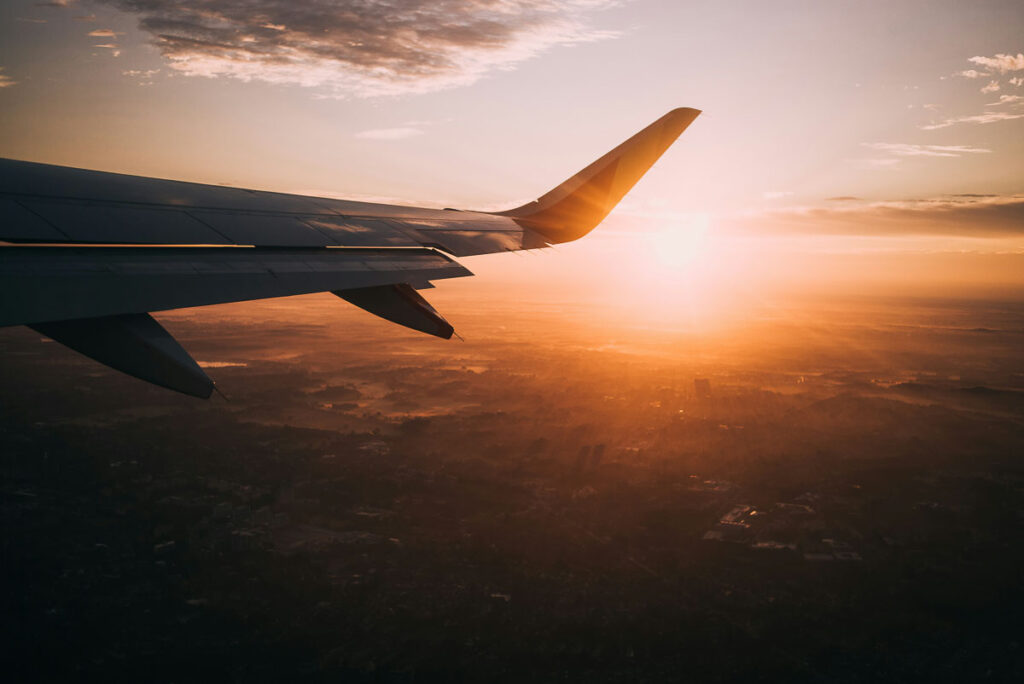Having unlimited time and money to work on your projects sounds freeing – but research shows the most creative solutions only emerge amid constraints.
A sculpture in the form of a huge transparent phallus was always going to raise eyebrows.
But after Taiwanese artist Kairon Liu stuffed that sculpture with more than 1500 expired antiretroviral tablets and soldered it shut, he learned that that the artwork he’d planned to display at the HIV Science as Art exhibition would never clear Australian customs.
He had to come up with a Plan B – fast.
Liu used his sculpture to create a self-portrait instead – of the phallus filled with a rainbow assortment of capsules, around which is draped the arm of an unidentifiable man.
The image powerfully captures the intermingling of desire and fear in a way the sculpture, on its own, simply doesn’t.
“It conveys how sometimes the simple act of taking a pill can be laden with a whole lot of feelings, including shame or ambivalence,” says Liu, when I interviewed him for this story in Cosmos.
It’s just one example of how constraints – in this case, legal – can force greater innovation that ultimately results in a better outcome than the one originally envisaged.
What are constraints?
According to the Collins Dictionary, a constraint is something that limits or controls what you can do.
This definition sounds restrictive. It carries a distinct whiff of being reined in or held back.
Indeed, some creatives will adopt the role of ‘victim’, viewing constraints as something that limit their freedom and put brakes on their ambition, according to authors Adam Morgan and Mark Barden, writing in A Beautiful Constraint.
Others will take on a ‘neutralizer’ role, categorising the constraint as a roadblock, but finding a way around it without compromising on their vision.
Then there are ‘transformers’ who view the constraint as an opportunity to come up with an even more exciting goal.
If you want to do your best work, be a transformer!
Research supports the idea that constraints – in writing, art, music, business, product development and multiple other fields – are actually necessary for optimal outcomes.
Catrinel Tromp, a Romanian-born cognitive psychologist and associate professor at Rider University (USA), says they are critical for creative thinking.
“Constraints play a role in each step of the creative process: problem finding, problem construction and problem solving,” she writes in Cognition, Language and Development.
To read more about why you should embrace constraints as a foundation of your creative practice, read this post.

Why do constraints fuel innovation?
Patricia Stokes, author of the book Creativity from Constraints: The Psychology of Breakthrough, describes a problem-solving model comprised of three parts – the initial state, the goal state (or desired solution), and a search space in which the path towards a solution is built.
For well-structured or ‘easy’ problems, such as a paint-by-numbers project, there’s a single, well-defined path to the goal state (the completed painting).
There is no need for the ‘search space’ when all you’re doing is matching the picture on the paint-by-number kit.
(Of course, the painter could always decide to go off-piste, in which case they probably wouldn’t have purchased a paint-by-numbers kit in the first place.)
Messier problems, however, have a ‘search space’ in which there are multiple different pathways to the goal state (the book, the poem, the article, the artwork, the new product).
There might still be a single obvious pathway by which to get there.
But introduce constraints (such as laws about the number and types of pharmaceuticals that visitors can bring into Australia) and suddenly the most obvious pathway is no longer open to you.
A new solution must be found.
Writing in the Journal of Product Innovation Management, Stokes argues that adding a constraint (“precluding an element of a reliable, predictable solution”) forces a series of alternative choices that are at the heart of innovation.
Each choice along the less-trodden path sparks fresh ideas and introduces new possibilities.
(Read this for more tips on staying flexible and other freelance writing lessons from the eye of the storm.)
6 ways writing constraints boost creativity
There are sound reasons to embrace constraints in writing. Here’s how to turn them from a source of frustration into a powerhouse of innovation.
Self-imposed constraints help you vault the hurdle of analysis paralysis
When your brain is bubbling with a multitude of ideas, just picking one, getting started, and staying focussed, can feel like an impossible ask.
But adding a constraint (such as, “I’m only going to work on assignments that pay at least $1 a word” or “I’m going to focus on travel writing projects”) rapidly cuts through the noise.
It transforms an overwhelming jumble of options into a far more manageable shortlist.
For more tips on getting started, read this post on task initiation.
Time constraints can help you cut to the chase
Parkinson’s Law states that “work expands so as to fill the time available for its completion”.
That’s why many writers, including myself, just never seem to finish a project that doesn’t have a deadline attached to it.
Without a deadline, it’s easy to slip into endless rounds of research, procrastination, rewriting, and other time-consuming tasks that don’t improve the story to any worthwhile extent.
Putting time limits on your tasks can help you avoid that unproductive cycle and focus on what matters most to complete a project – and move onto the next.
Read How to write better, faster, more for additional tips on how to speed your workflow.
Writers can also use “lack of time” as an excuse for not following through on their writing goals.
Finding time sometimes means writing in less-optimal conditions (on a train, on a plane, while waiting at the doctor’s surgery).
It often means writing after your day job is done and parental and other duties are fulfilled.
Trent Dalton, for instance, wrote the blockbuster Boy Swallows Universe over a year by writing every night from 8pm till 10pm.
(Curious to explore a Boy Swallows Universe guide to Brisbane? Get my guide.)
Constraints on word count help narrow your focus
Many writers rail against restrictive word counts.
They argue that 1000 words, for example, doesn’t permit the level of depth and nuance any serious topic demands – and they’re right.
But constraints on word count help you to ‘write tight’ and distil a narrative down to its very essence.
And in an age of competing time-pressures and shrinking attention spans where trends like flash fiction and micro memoirs hold sway, a piece of writing that’s short, quick, and easy to digest is all that many readers are willing to commit to.
Earlier this year, I contributed to The Guardian Australia’s ‘Words to Live By’ summer series.
I thought it would be challenging to share the best advice I’d ever received and how It had affected my life since in a mere 400-500 words.
But far from being restrictive, I found this limitation forced me to cut the waffle and created a tightly focussed story.
No-one needed to know what the pool looked like, that I’m still a keen swimmer, or that I later became a teacher of infant aquatics myself.
Every word had to work hard.
But in the brevity stakes, it was nothing compared to the six-word story challenge (“For sale: baby shoes, never worn”), attributed to Ernest Hemingway.
That one gives me goosebumps every time.

Location constraints can stimulate your lateral thinking
Travel writing was one of many industries decimated by the global pandemic.
Flights were grounded, borders closed, hotels were deserted, tours were cancelled, and cruise ships (even those that didn’t become giant vectors of disease) suspended operations.
Travel writers weren’t going anywhere. And pardon the expression, but they had to ‘pivot’.
Like so many other professionals, we had to re-evaluate our skills and offerings, and forget about far-flung destinations. It was a time to find the treasures in our own backyard.
With the borders around Queensland firmly shut, I began to explore my home state in a way I hadn’t before, and fell in love with both Outback Queensland and Far North Queensland.
Read more on Why your backyard is the best place to kick off your travel writing career.
Other travel writers leaned on a range of alternative strategies.
Some launched blogs (unrelated to travel) and others returned to general reporting duties while Louise Southerden built a tiny home and wrote a beautiful memoir about it.
Budget constraints force you to think outside the box
When financial resources are in short supply (as they almost always are for writers) it compels a mindset shift towards making the very most of what you have. This is why maximising the amount of words you can earn from a single trip is something of a survival skill.
Cutting your budget to the bone can sharpen your problem-solving skills.
That’s why people find it easier to be frugal in the few days before payday.
Budget constraints mean coming up with more creative story angles, pursuing off-the-beaten-track topics that are less costly to research, or repurposing existing work.
For example, Malcolm Gladwell’s articles for The New Yorker often become the basis for his bestselling books, such as Outliers and The Tipping Point.
Repurposing content you’ve already written provides maximal value for effort, and it might even expand your reach.
Could your combined blog posts serve as the basis for a book? Do you have longer articles which can be sliced and diced into social media posts? Are there aspects of your work which might provide the basis for a newsletter (such as a behind-the-scenes look at whatever it is you create)?
Budget constraints don’t need to hold you back. Stephen King wrote Carrie on a battered typewriter while living in a trailer.
To read more on becoming more resourceful – even from behind bars – read Creativity secrets from armed robbers, fraudsters and other criminals.
Legal or regulatory constraints facilitate a fresh approach
The example of Kairon Liu which led this post is far from the only example of how legal or regulatory constraints can cause an artist to reimagine an old project – or start a new one.
Self-described ‘writer who draws’ Austin Kleon started his Newspaper Blackout series of poems by redacting newspaper pages with blackout markers.
He later wrote in The New York Times that blackouts allowed him to get around the copyright law constraints of “fair use” which allow the public to reproduce portions of copyrighted materials without permission, mainly for comment or criticism.
“There are four factors that determine whether a work can be considered fair use, and I’ve found that these legal constraints can actually be turned into artistic constraints,” he wrote.
“Rather than limiting my creativity, these constraints make the poems better.”
Over to you … What constraints do you face in your work – and do they help or hamper?
While you’re here … I invite you to subscribe to my newsletter. You’ll receive writing tips every fortnight, breaking news on courses currently under development, and a FREE copy of Pitching for Publication, which deconstructs three successful pitches to Australian and international editors.

